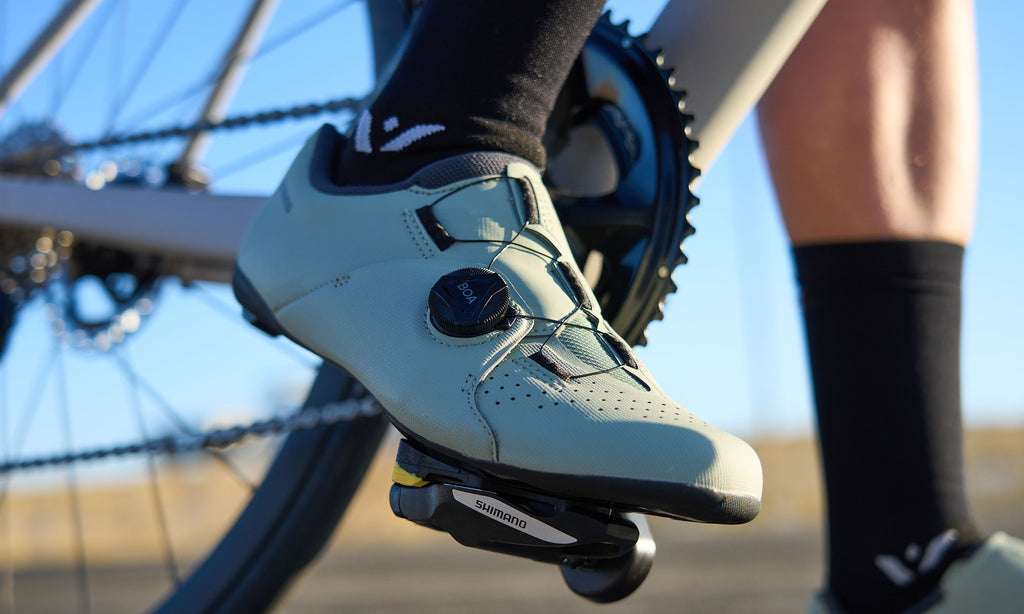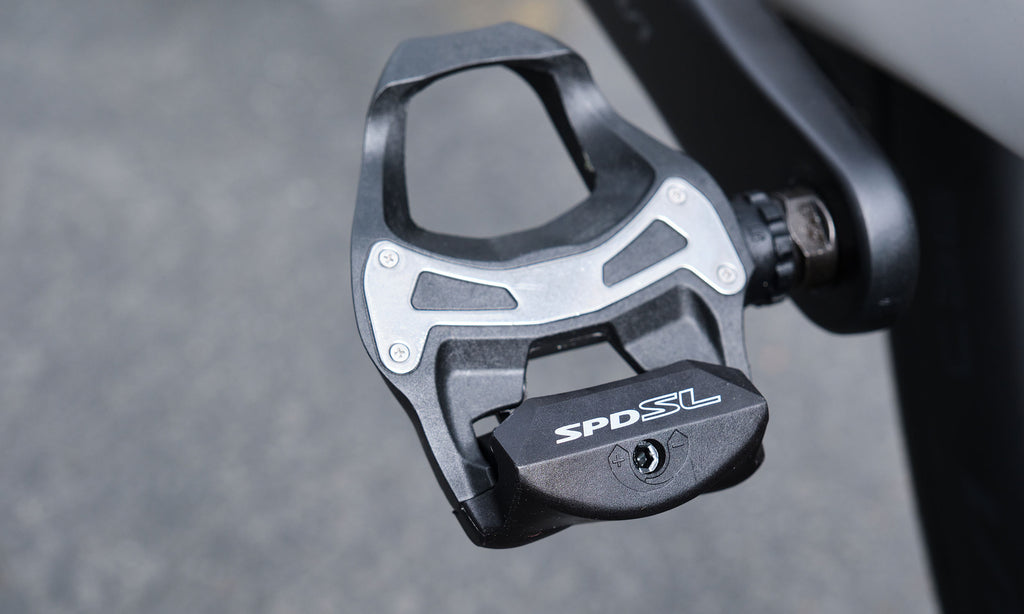Setting Up Shimano Clipless Road Pedals

Dialing in the connection between you and your bike starts with your pedal spring tension. This is where your foot – your shoe and cleat – interface with the bike's pedal to create a seamless, efficient connection for pedaling down the road, powering up a climb, or sprinting to a race finish. But how tight or rigid should that connection feel?
Like so many things in cycling, the right level of pedal spring tension is personal. It depends on your riding style, how experienced you are at clipping in and out, and your body's range of motion or ankle strength.
Riders who live to sprint for finish lines and town signs will ask very different things from their gear compared to more casual riders or those looking for an adventure at their own pace. Fortunately, each Shimano SPD-SL road pedal has an adjustable spring tension to fine-tune the perfect level of connectedness for any road, whether racing or just riding along. Here are a few considerations to better understand the SPD-SL pedal setup.

Why Opt for More Spring Tension?
A higher pedal spring tension will provide the most secure connection between your cleat and the SPD-SL pedal. This ensures maximum power transfer and a "locked-in" feel for aggressive and explosive riding. Think riders looking to get every iota of efficiency out of their bikes as they seek ultimate speed.
Keep in mind a higher spring tension will require better ankle mobility and strength to turn the foot and disengage from the pedal. More experienced riders who have lots of practice getting in and out of clipless pedals will often opt for this firmer spring tension.
Ultimately, you’ll most likely find the higher spring tension settings in WorldTour road races and the fastest local group rides. This is where the pros and racers prize absolute connectivity and efficiency above all else, especially during explosive power outputs.
Why Opt for Less Spring Tension?
A lower SPD-SL spring tension still provides a connected feel between rider and bike but allows for easier disengagement with less effort. These settings are perfect for those who are new to clipless technology or who are gaining confidence with clipping in and out.
The reduced effort to clip out means riders with less strength or mobility in their ankles will appreciate a lighter spring setting, even those with years of riding experience. Ultimately, this lower SPD-SL spring tension is well-suited for riders whose pedaling dynamics remain consistent without great bursts of power.
How to Adjust Spring Tension on SPD-SL Pedals
All SPD-SL pedals, at every level, come with a tension adjustment screw. The single-sided clipless design of our road pedals means that each one will have just one adjustment screw (unlike some of our SPD mountain bike and offroad pedals that feature two screws).

Pedals come with a stock setting in the middle of the range (pedal dependent) and can be adjusted up or down. Each tension setting has a tactile and audible click as the adjustment screw turns.

To increase spring tension, turn the adjustment screw to the right (righty tighty). To decrease spring tension, turn the adjustment screw to the left (lefty loosey). It can be helpful to adjust both screws the same amount at the same time to keep everything even side to side.
Once you think you have the correct setting for you, head out for a test ride on a quiet road or in a parking lot to see if the spring tension suits your needs. It’s a good idea to bring an Allen wrench along to fiddle with the tension as you see fit. No need to ride back and forth to the garage each time to make an adjustment.

Because each pedal is individually adjustable, settings can be asymmetric. While most riders prefer an even tension from side to side, some cyclists may benefit from asymmetric settings. For instance, a rider who has injured one leg or ankle might need a looser setting on that side to enhance their comfort and ride experience.
Once you’ve found your favorite setting, record that number so you can remember it for future reference. To figure this out, start at your preferred setting and then count how many clicks it takes to turn the screw all the way to the left - to the loosest setting. Note the number of clicks it took - write it down somewhere - and then turn the screw back the same number of clicks so you align on the setting you started with.

Additional Pedal Adjustment With SPD-SL Cleats
The Shimano SPD-SL pedal system is compatible with Shimano's three SPD-SL cleat options that can further fine-tune your connection with the bike. The three cleats are designated by color: Yellow, Blue, and Red. Each has different float ranges and pivot point locations, and they are designed with various rider biomechanics and riding styles in mind.
Different amounts of float help accommodate different riding styles or help with physiological nuances such as flexibility (or lack thereof), past injuries, or knee pain. Learn more about how more or less float can create the perfect setup for you and your ride here.









